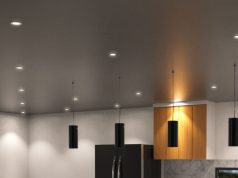LEDs may have caught your attention because of their long average lifespan. Well, who wouldn’t want something that can last that much? Having that kind of lighting solution will lessen the need to purchase and install replacements, giving you more time and money to spend on the things you actually like. However, how long do LED strip lights last? How is their average lifetime quantified?
LED Strip Light’s Lifespan and the L70 Metric
While incandescent bulbs burn out and fluorescent lamps flicker over time, LEDs age differently. Instead of a complete blackout, it gradually decreases in light output. With all the sudden failures due to power surges and mechanical damages, you can expect that their lifespan ends once your LEDs are too dim to use.
Although it may pop into your mind, how dim is too dim? There are a lot of answers to that question, and you can approach it based on personal preference or the L70 metric. If you found it on your likes and dislikes, you’ll probably dispose of your LEDs before it reaches the specified disposal rate or later than the prescribed changeover.
However, if you base it on the L70 metric, 30% of lumens depreciation or 70% of light remains should be the end of the line. The L70 metric means the number of hours an LED would take to diminish to only 70% of its original light output.
L70 Metric Calculation
Many factors affect the lifespan of LEDs, like durability, quality, and material. However, the general rule is higher drive currents and temperature would result in faster light output decline. Since the material selection is such a diverse and wide range among various LED types and manufacturers, LM-80 recommends testing of sample specimens at a predetermined temperature and current drive, with light output change measurement at 1000-hour intervals at 10,000 hours.
Typically, the LM-80 test is done by a third-party laboratory to guarantee accuracy and fairness, and the result is published in a report style. All reputable manufacturers will have this test done on their LEDs, and a legitimate LED supplier should not have any issues showing this to you, especially if you’re buying in bulk!
The challenge with the lifespan test of LEDs is that it takes a very long time. Even if the LED is lit 24/7, you’ll need around 14 months to complete the 10,000 hours test! This is forever in a fast-paced industry like LED lighting. Testing a fitting to the whole 50,000 hours claim needs 6 years of continuous testing.
Since the LM-80 test is not producing results as fast, an exploration algorithm, TM-21, was made. The process takes in the data from the LM-80 samples over the initial several thousand hours. Then it comes up with an estimated lifetime number, which is the figures you see on specifications sheets and warranties.
3 Reasons LED Lifetime Claims May Be Inaccurate
Both the LM-80 test and TM-21 procedure has several requirements and conditions for lifespan rates. If your LED supplier did not comply with these instructions, their lifetime claim might not be accurate.
- You can only declare up to 6x the number of hours that were really tested. Therefore, if the result of the LM-80 test is only up to 5,000 hours, even if the LED being tested performed spotlessly, the most prolonged lifetime claim can only be 30,000 hours based on the collected data. This is to guarantee that rash conclusions are not derived based on limited information.
- The case temperature and drive current must be higher for the LM-80 test than the one used on the LED strip. As said before, temperature and drive current are the two factors that influence the lifespan of an LED. If your LED strip can withstand a higher drive current and temperature, the actual use situations may exceed that of the LM-80 test. Because of this, the original lifespan prediction would be an overestimate.
- Both the LM-80 and TM-21 tests are not 100% perfect. There are other factors like humidity and VOCs found in the potting compound for waterproof strip lights that are not included in the test procedure. There are also a few guidelines on the materials that can be substituted in an LED’s design while applying the same LM-80 test report. You never know; manufacturers may use high-quality materials for test samples and cheaper materials for production.
LED Strips Shifts Colour Overtime
Aside from the brightness deterioration, some LED strips change colour over time. Although you’ll see the colour shift in the LM-80 test report, you won’t find it on the technical specifications. Well, it’s hard to find any documentation of the acceptable shift level for your personal use and the entire industry.
In the metric called “delta u’v”, you’ll be able to have a clearer understanding of colour stability. Just keep in mind that anything over 0.003 is considered noticeable to the human eye. So, if you are very particular about this, you’ll need the LM-80 test report or the “delta u’v”.
Typically, a delta u’v under 0.006 over the LED strip’s lifetime is regarded as acceptable for many indoor applications. However, it’s best to choose a fixture with better colour stability for more particular installations, like in museums and illuminating artworks.
Other Aspects that Affect an LED Strip’s Lifespan
Although LED chips play a critical part in an LED strip light’s longevity, other elements can jeopardise it! The adhesive backing and the power supply can deteriorate an LED strip’s lifespan. The constant impact may damage the LEDs if your strips don’t have a strong backing and continually fall off the surface to which you attached them.
When it comes to the power supply, if that fails, don’t expect your strips to dim over time; it’ll go dark immediately! So, you need to ensure that your strip lights are not the only ones that are durable and high-performance. You also need the power supply to be top-quality to them run!
When purchasing LED strips, don’t just buy anywhere since some do really cut corners. Look for trusted suppliers and manufacturers who stand by their claims, like us, at Simple Lighting! All our LED products, fixtures and accessories can last to their average lifespan. So, don’t go elsewhere and check out our website!












